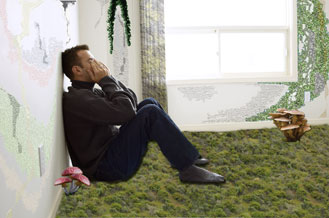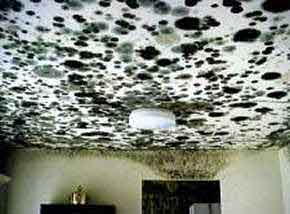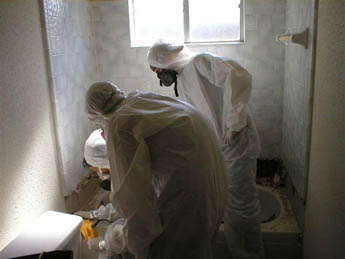
Molds can be found almost anywhere and can grow on virtually any organic substance with the presence of moisture and oxygen. It is nearly impossible to eliminate all mold and mold spores in the indoor environment as mold spores are nearly everywhere. However, mold growth can be controlled indoors by controlling moisture. Moisture control should be with respect to elimination of water infiltration from the exterior and condensation building up on the interior. Potential health concerns are an important reason to prevent mold growth and to remediate/clean up any existing indoor mold growth.
The press has successfully relayed the health concerns of Stachybotrys chartarum (SC) contamination. However many fungi (e.g., species of Aspergillus, Penicillium, Fusarium, Trichoderma, and Memnoniella) in addition to SC can produce potent mycotoxins (poisons as a defense mechanism) that have been identified as toxic agents.
Health Risks
Health risks are posed not only to the inhabitants of an affected building, but to contractors performing renovations, remediation or cleaning. Health issues include Organic Dust Toxic Syndrome (OTDS) or Hypersensitivity Pneumonitis (HP). OTDS may occur after one heavy exposure to dust contaminated with fungi. OTDS produces flue- like symptoms. HP may occur after repeated exposures to an allergen and can result in permanent lung damage. Many people's bodies respond to fungi through allergic reactions including fatigue, runny nose, eye irritation, cough, congestion and aggravation of asthma. Contact with fungi can also cause dermatitis. Some studies (although unproven) have suggested an association between SC and Pulmonary hemorrhage/hemosiderosis (an uncommon condition that results in bleeding of the lungs) in infants, typically those less than 6 months old. 1

Inhalation of fungal spores, fragments of spores or mycotoxins produced by a wide variety of fungi can cause or increase allergic reactions, toxic effects or infections. According to the NYC Department of Health, there are a limited number of documented cases of health problems from indoor exposure to fungi. A human must be directly exposed to the toxic fungi or by-product by means of inhalation, dermal contact or ingestion to be affected. A standard regarding an acceptable' level of exposure has not yet been established because humans react differently based upon genetic predisposition, age, state of health and exposures. The state of California has recently launched the nation's first comprehensive effort to address complex liability issues associated with toxic mold -the Toxic Mold Protection Act of 2001 was signed into law and became effective on January 1, 2002. The CA State Department of Health Services will convene a task force to evaluate the health risk posed by mold, set standards for identification, assessment, and remediation of mold, and develop permissible exposure limits to mold. Other states may follow.
Detection
Concerns should arise when the presence of mold, water damage, or musty odors are noticed. Upon discovery, the issue should be addressed immediately. The first step in addressing the issue is to eliminate the water source. The second step would be removal of the mold. A visual inspection is the first step in identifying a possible contamination problem.
A visual inspection often is enough to warrant remedial action. The means of remediation is determined by the extent of any water damage and mold growth identified via visual assessment. The use of specialty equipment to view spaces in ductwork or behind walls, or a moisture meter to detect moisture in building materials, may be helpful in identifying hidden sources of fungal growth and the extent of water damage.
Surface or air samples may need to be collected to identify specific fungal contaminants as part of a medical evaluation if occupants are experiencing symptoms which may be related to fungal exposure or to identify the presence or absence of mold if a visual inspection is equivocal (e.g., discoloration and staining). An individual trained in appropriate sampling methodology should perform sampling.
Remediation
In all situations, the underlying cause of water accumulation must be rectified or fungal growth will recur. Clean-up, drying, and/or removal of water damaged materials will prevent or limit mold growth. If the source of water is elevated humidity, relative humidity should be maintained at levels below 60% to inhibit mold growth. 2 The proper placement of a vapor barrier during construction or renovation is as important as the proper execution of exterior weatherproofing. Emphasis should be on ensuring proper repairs of the building infrastructure, so that water damage and moisture buildup does not recur.
The size of the area impacted by fungal contamination primarily determines the type of remediation.
Non-porous (e.g., metals, glass, and hard plastics) and semi-porous (e.g., wood, and concrete) materials that are structurally sound and are visibly moldy can be cleaned and reused. Porous materials such as ceiling tiles and insulation, and wallboards with more than a small area of contamination should be removed and discarded. Porous materials (e.g., wallboard, and fabrics) that can be cleaned, can be reused, but should be discarded if possible. All materials to be reused should be dry and visibly free from mold.

When cleaning surfaces contaminated with fungi, respiratory protection (e.g., N95 disposable respirator), in accordance with the OSHA respiratory protection standard (29 CFR 1910.134), is recommended. Gloves and eye protection should be worn.
In a reas of extensive contamination (greater than 100 contiguous square feet in an area) a professional with experience performing microbial investigations should be consulted prior to remediation activities to provide oversight for the project. In these extensive cases, full-face respirators with high efficiency particulate air (HEPA) cartridges should be worn in addition to disposable protective clothing covering both head and shoes and gloves. The affected area should be isolated (including ventilation ducts/grills, fixtures, and any other openings); an exhaust fan with a HEPA filter to generate negative pressurization and airlocks and decontamination room may be necessary. 3
In summary, water infiltration is more then a cosmetic inconvenience in the least of cases and includes unseen health issues and structural issues in the worst of cases. The presence of mold within an occupied, enclosed space provides reason for concern. Dead or alive, the mold may pose a risk, although the levels at which a risk is posed for any individual are undetermined and currently a matter under debate and investigation. The important issues to remediate the mold are removing the moisture source, properly protecting the vicinity and removal of the mold and damaged materials.
- New York City Department of Health, Bureau of Environmental & Occupational Disease Epidemiology.
- American Society of Heating, Refrigerating and Air-Conditioning Engineers, Inc. Thermal Environmental Conditions for Human Occupancy - ASHRAE Standard (ANSI/ASHRAE 55-1992). Atlanta , Georgia , 1992
- Environmental Protection Agency, Mold Remediation in Schools and Commercial Buildings
 Print
Print Email
Email







